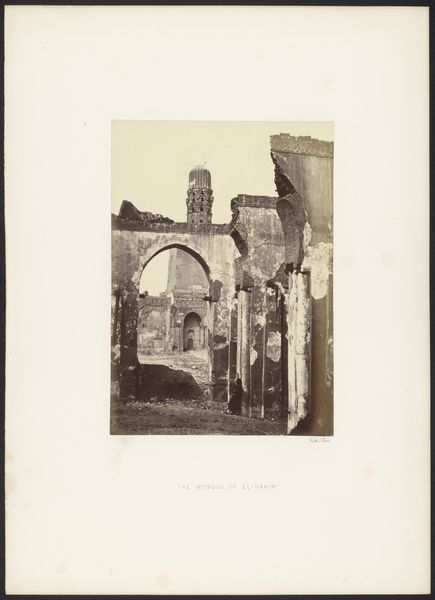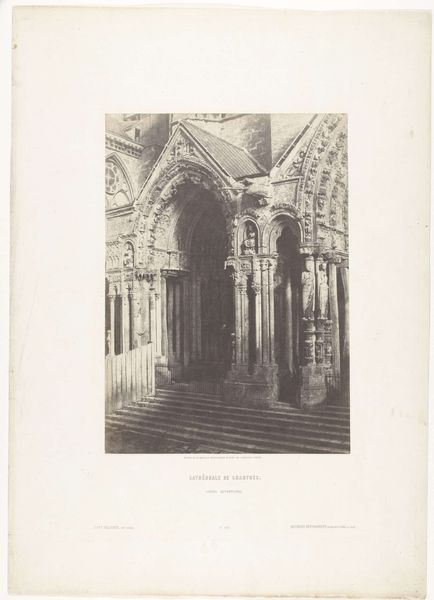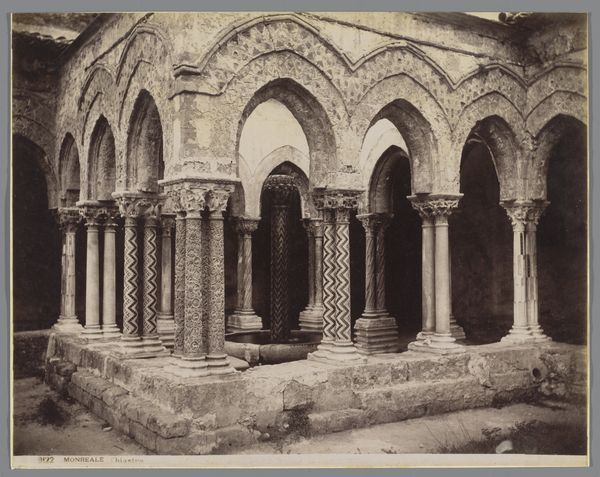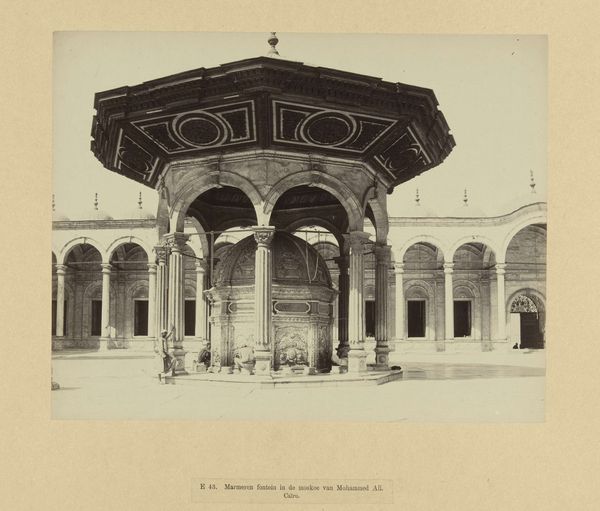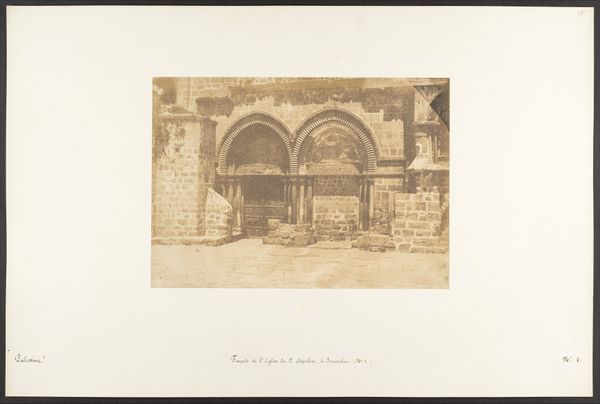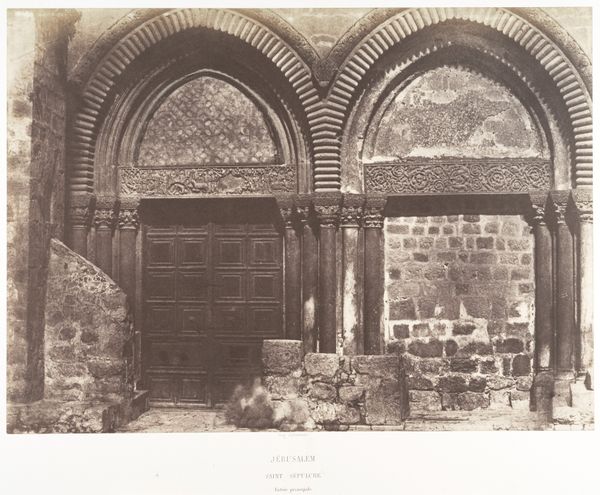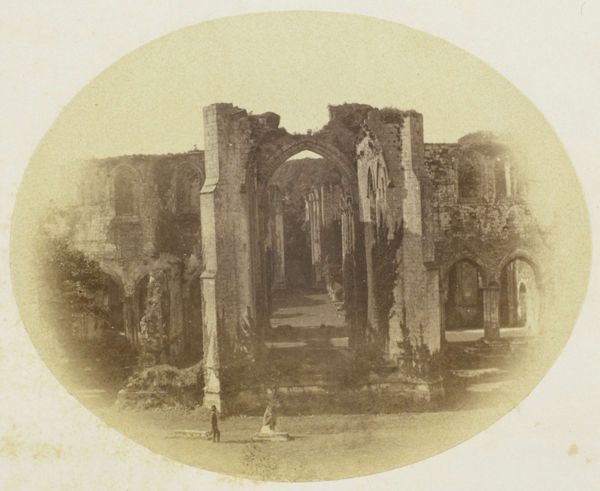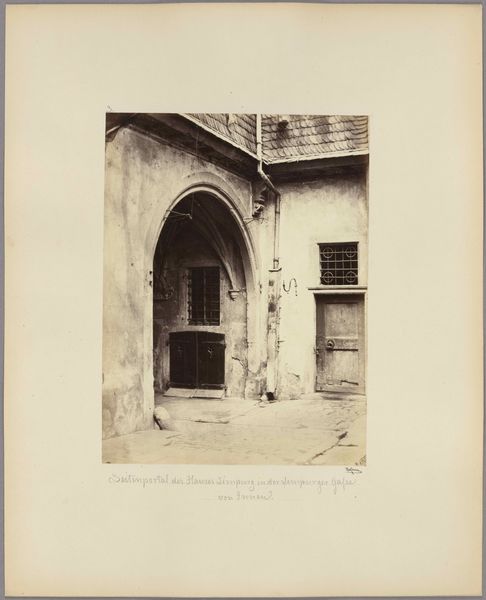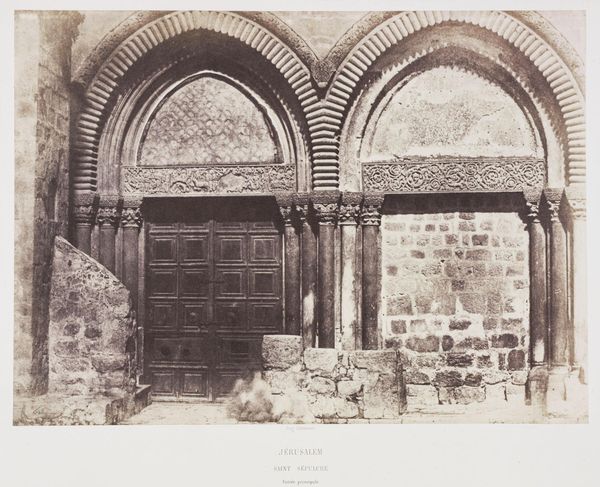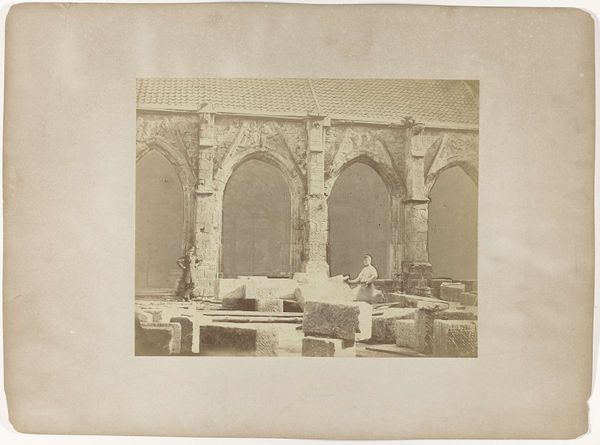
Kapel van Sint-Helena in de Heilig Grafkerk, Jeruzalem c. 1867 - 1877
0:00
0:00
felixbonfils
Rijksmuseum
photography, gelatin-silver-print
#
landscape
#
photography
#
historical photography
#
ancient-mediterranean
#
gelatin-silver-print
#
19th century
#
realism
Dimensions: height 209 mm, width 272 mm, height 469 mm, width 558 mm
Copyright: Rijks Museum: Open Domain
Editor: This gelatin-silver print by Félix Bonfils, taken sometime between 1867 and 1877, captures the Chapel of Saint Helena in the Church of the Holy Sepulchre in Jerusalem. It's fascinating, the way the light plays off the aged stone. What strikes you most about this photograph? Curator: Well, focusing on the materiality of the image, let's consider the production of this photograph within its social context. The gelatin-silver process, relatively new at the time, allowed for mass production and dissemination of images like this. The photograph becomes a commodity, an object of consumption for those interested in the Holy Land. How does this commodification influence our understanding of the site itself? Editor: That's a really interesting point. It shifts the focus from the purely spiritual to the material conditions of image making and its audience. Curator: Precisely! Think about the labor involved—the mining of silver, the production of photographic chemicals, the photographer’s skill. These materials and processes are often overlooked when we consider the 'art' of photography, but they are fundamentally connected to the social and economic forces at play. How might this perspective change our view of Bonfils’s role? Editor: It moves him away from being solely an 'artist' capturing beauty and more toward an entrepreneur participating in a larger industry. So the value is not just aesthetic but also tied to labor and consumption. Curator: Exactly. And notice how Bonfils, through the photographic process, presents the Chapel not as a sacred space, but as a tangible, reproducible artifact. Editor: It almost democratizes the space. Anyone can now "own" an image of this sacred chapel. Thanks for highlighting those details; it's given me a new lens to view these historical photographs. Curator: It is crucial to acknowledge how material conditions shape our perception and experience. I found our chat insightful too.
Comments
No comments
Be the first to comment and join the conversation on the ultimate creative platform.
